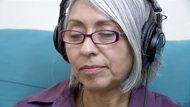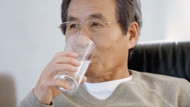Top of the pageActionset
Cancer: Controlling Nausea and Vomiting From Chemotherapy
Introduction
Of all the side effects of chemotherapy, nausea and vomiting are two of the most distressing. But in many cases, nausea and vomiting can be controlled and even prevented.
- Nausea and vomiting can be controlled and even prevented. The best treatment plan is one set up by you and your health care team, based on your particular needs and feelings. You are the authority on how well you feel and how much nausea you have.
- Today's antinausea drugs are very good at preventing and controlling nausea and vomiting. Your doctor should be able to find one that works for you.
- Prevent nausea. When you or your doctor foresee that a treatment will make you very sick, it's best that you take antinausea medicine beforehand.
- There are several other ways to get relief and make yourself feel better before and after your chemotherapy treatments.
How can I control nausea and vomiting?
The best way to control nausea and vomiting is to begin treatment for it before you start chemotherapy. Talk to your doctor about your treatment plan. Find out if the cancer drug you'll receive is likely to make you sick. Ask your doctor what medicines are available to prevent nausea and vomiting. Talk about your concerns, no matter how small. The more you know about your treatment, the more you will feel in control and the easier it will be to talk about it with your doctors and nurses.
Antinausea drugs
Antinausea drugs are usually taken on a regular daily schedule for as long as chemotherapy lasts. Sometimes you may be asked to take the antinausea drug "only as needed." You may be given more than one kind of antinausea drug. Drugs to relieve your nausea include aprepitant (Emend) and ondansetron (Zofran) .
Antinausea drugs can be given as pills you swallow, through your vein (IV), or as shots. Some drugs are available as suppositories, as capsules that melt in your mouth, or as a patch that is taped to your skin.
Be sure to follow your doctor's instructions for taking your antinausea medicines and to report back about how well they are working.
If you have nausea and vomiting after chemotherapy in spite of taking antinausea drugs, tell your doctor immediately. A different antinausea drug may be the answer.
Medical marijuana
Marijuana, either in its natural form or as a synthetic drug, has been shown to ease the nausea and vomiting caused by chemotherapy. Although it worked better than many of the antinausea drugs available in the past, it doesn't seem to work as well as other medicines available today. And marijuana can cause unpleasant side effects including dry mouth, low blood pressure, and dizziness, especially in older people or people who haven't used it before. Also, the legality of marijuana for medical use is still a question in many countries.
Some doctors still use the synthetic form of marijuana to treat nausea and vomiting. These drugs have not been shown to work as well as other drugs now available, but they may be helpful for certain people.footnote 1
Complementary therapy
Although drugs are the main way to treat nausea and vomiting, there are other treatments that have been shown to work well.footnote 1 They involve the help of a qualified therapist who can teach you to use your mind and body to control nausea and vomiting. These techniques help stop anticipatory nausea and vomiting. They work by relaxing you, distracting your attention, helping you feel in control, and making you feel less helpless. These treatments include:
- Biofeedback . Biofeedback uses the mind to control a body function that the body normally regulates on its own, such as skin temperature, muscle tension, or heart rate.
- Guided imagery . This is a series of thoughts and suggestions that direct your imagination toward a relaxed, focused state. This technique can help you mentally block the nausea and vomiting.
- Distraction . For example, kids getting chemotherapy may use a video game to help keep their mind off what is happening. This may also help mentally block the nausea and vomiting.
- Progressive muscle relaxation . This is a technique in which you learn to relax by tensing and then releasing different groups of muscles, one at a time.
- Self-hypnosis . A therapist can teach you to hypnotize yourself. Some people are able to learn from books.
Acupuncture
Some studies have shown that acupuncture is an effective treatment for nausea and vomiting caused by chemotherapy.footnote 2 Your doctor may refer you to a qualified acupuncturist.
You can also try acupressure. Constant pressure on the P6 point is used to prevent or reduce nausea. The P6 point is on the inner side of your arm, in line with your middle finger. It is close to your wrist, one-sixth of the distance between your wrist and elbow. You can press on your arm with a thumb or finger or try wearing wristbands (such as Sea-Bands) that press a plastic disc on the P6 point on each arm.
Nutrition
Eating well may seem to be an odd way to treat nausea and vomiting, but it's very important. As a cancer patient, you need nutritious foods to help you feel better, keep up your strength and energy, keep up your weight, and keep up your ability to fight infection and recover as quickly as possible.
Here are some tips for eating well during chemotherapy:
- Eat small, frequent meals or snacks. Treat yourself by choosing the foods you like best.
- Make the most of the days when your appetite is good.
- Ask friends and family for help with shopping and preparing meals. Consider having meals delivered to your home or have lunch at a community or senior center.
- Nutritional supplements are convenient and can help you get the extra calories and protein you need. Try a variety to find out which ones work best. Your doctor, nurse, or dietitian can help and may have samples for you to try.
- Is there a time of day when you are able to eat more? Many people find that breakfast time is best. Try eating more during that time of day when you can.
- Don't force yourself to eat when you are nauseated.
- Eat food cold or at room temperature.
- Keep your mouth clean, and brush your teeth after vomiting.
- Have fresh air with a fan or an open window.
- Limit sounds, sights, and smells that make you feel sick.
- When you don't feel like eating your normal foods, try apple or grape juice, weak teas, clear broths, dry toast, cooked cereal, and gelatin desserts. Avoid citrus juices and lemonade.
- Try ginger, such as candied ginger or ginger tea. Real ginger-not ginger flavoring-helps to reduce nausea.
- Eat a light meal or snack before your chemotherapy appointment so that you have something in your stomach.
- If your chemotherapy is the kind that takes several hours rather than a few minutes, bring a light meal or snacks with you. Your treatment center should have a refrigerator and microwave available for your use.
References
Citations
- National Cancer Institute (2011). Nausea and Vomiting PDQ-Health Professional Version. Available online: http://www.cancer.gov/cancertopics/pdq/supportivecare/nausea/HealthProfessional.
- National Cancer Institute (2013). Acupuncture PDQ - Health Professional Version. Available online: http://www.cancer.gov/cancertopics/pdq/cam/acupuncture/healthprofessional.
Current as of: May 3, 2017

